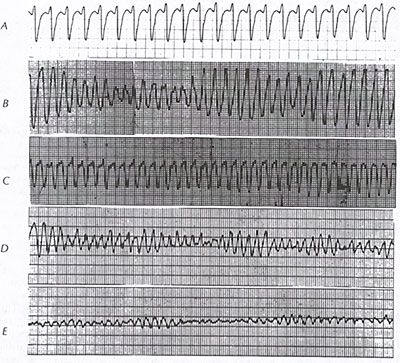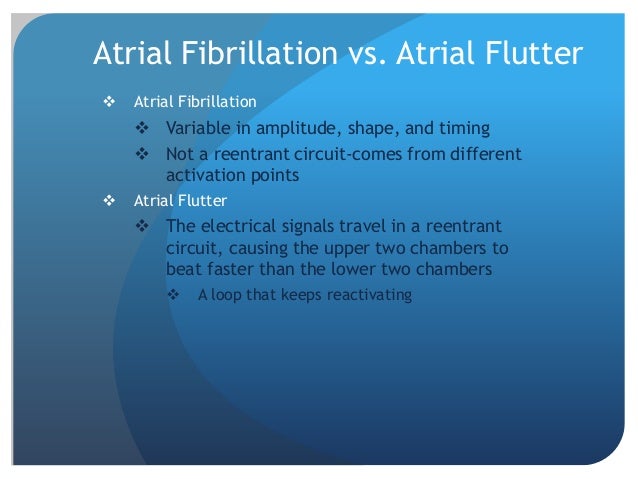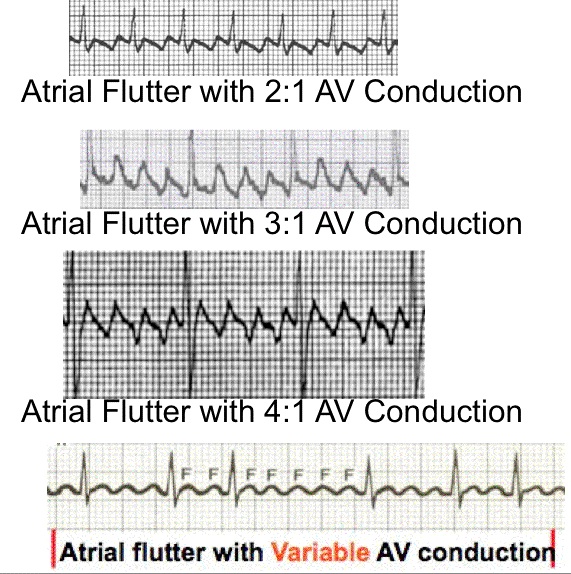

Echocardiography is used to rule out structural heart disease and to evaluate for any atrial thrombi.

Diagnosis is confirmed with ECG showing absent P waves (replaced by fibrillatory waves) with irregular QRS intervals. Ineffective atrial emptying as a result of Afib can lead to stagnation of blood and clot formation in the atria, which in turn increases the risk of stroke and other thromboembolic complications. Physical examination typically reveals an irregularly irregular pulse. When symptoms do occur, they usually include palpitations, lightheadedness, and shortness of breath. Individuals with Afib are typically asymptomatic. While the exact mechanisms of Afib are poorly understood, associations with a number of cardiac (e.g., valvular heart disease, coronary artery disease) and noncardiac (e.g., hyperthyroidism, electrolyte imbalances) risk factors have been established. 1969 May 185(5):381-5.Atrial fibrillation (Afib) is a common type of supraventricular tachyarrhythmia characterized by uncoordinated atrial activation that results in an irregular ventricular response. A study of fibrillatory wave size on the regular scalar electrocardiogram. Acta Med Scand. Can atrial fibrillation with a coarse electrocardiographic appearance be treated with catheter ablation of the tricuspid valve-inferior vena cava isthmus? Results of a multicentre randomised controlled trial. Heart.


#A FLUTTER VS A FIB TRIAL#
But a randomized multicentre trial failed to show any advantage for cavo-tricuspid isthmus ablation over external cardioversion in maintaining sinus rhythm in the treatment of coarse atrial fibrillation. Some authors found a single macro re-entrant circuit in the right atrium in cases of coarse AF. They also noted that patients with fine AF was significantly older than those with coarse AF. Ī study of 811 patients by Yilmaz MB et al noted that those with coarse AF was more associated with cerebrovascular events than fine AF. Hence some even call it as flitter or flutter-fibrillation. Such types of atrial fibrillation is likely to be persistent unless the cause of atrial dilatation is reversible with an intervention like balloon mitral valvotomy. In this ECG the diagnosis of atrial fibrillation (AF) is not difficult because the fibrillary waves are coarse and easily visible in leads V1 and V2. Looking at a long rhythm strip and close scrutiny of RR intervals to locate 50% variation between the longest and shortest RR intervals is useful in clinching the diagnosis of atrial fibrillation in such cases. It may be difficult to recognize the irregularity of RR interval when the ventricular rate is fast, especially in a short ECG strip. In such cases, absence of P waves and a totally irregular RR interval will give the clue to the presence of underlying atrial fibrillation. Sometimes fibrillary waves may be quite fine so as to be almost unrecognizable in certain leads. Atrial fibrillation is recognized on ECG by the absence of P waves and presence of fibrillary waves.


 0 kommentar(er)
0 kommentar(er)
